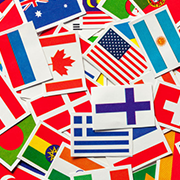General subject related
During the sixth Trade and Technology Council (TTC) meeting, the United States and the European Union committed to improving electronic invoicing (e-invoicing) compatibility. The goal is to reduce global trade costs, enhance security, and streamline business processes like customs, payments, and fraud prevention.
Both sides agreed to a shared set of principles for e-invoicing:
- One connection, global access,
- No fees for switching service providers (Access Points),
- Open exchange networks where users can choose their own Access Point.
The US and EU will continue working together to ensure:
- Flexible data structures that support local legal needs but maintain core standards,
- Aligned invoice information so data is compatible across systems,
- Roaming capabilities that let users connect with each other regardless of service provider.
To support this effort, a new oversight body called the DBNAlliance has been launched from the US E-invoicing Pilot Project. It will:
- Define technical standards, policies, and security rules,
- Offer memberships to service providers (not businesses directly),
- Ensure all service providers can communicate within the network.
Businesses don’t need to join the alliance themselves, they just need a provider who is a member to send and receive e-invoices within the framework.
The Exchange Framework is a technical network designed for safe, standardized sharing of digital documents like invoices. It solves common problems such as how to connect systems, transfer information securely, and enable automation.
It uses a Four-Corner Model, where:
- All businesses act as both senders and receivers,
- Documents are exchanged through certified Access Points,
- Once connected, companies can send invoices to any other business on the network.
It supports:
- AS2/AS4 protocols,
- UBL 2.x structured formats (invoices, credit notes),
- Attachments and electronic signatures,
- Detailed data fields (e.g., supplier/customer info, shipping, taxes, payment info).
The US e-Invoicing Pilot
Led by the Business Payments Coalition and the Federal Reserve, the US tested a national e-invoicing model across three pilot waves in 2022. Over 80 organizations helped finalize specifications, and the system is now ready for widespread use.
E-invoicing helps businesses:
- Automate purchasing and payment workflows,
- Reduce errors, delays, and costs,
- Improve supply chain efficiency and visibility,
Enable cross-border communication and integration.
With both the US and EU aligned on a shared vision for e-invoicing, global trade can become more efficient, secure, and digitally connected than ever before.
Other news from Other countries
Preparing for VAT in Qatar: Essential E‑Invoicing Steps for Businesses
 Other countries
Author: Ema Stamenković
Other countries
Author: Ema Stamenković
Qatar is advancing towards mandatory e-invoicing aligned with VAT. Key requirements include registration with tax authority, ERP integration, and timely structured invoicing. Benefits include faster reconciliation, improved compliance, and reduced fraud. Governance risks must be addressed early. An action plan involves gap analysis, pilot testing, and team training. All businesses must prepare, re... Read more



UAE to Launch E‑Invoicing Pilot in July 2026
 Other countries
Author: Ema Stamenković
Other countries
Author: Ema Stamenković
UAE will implement mandatory Peppol-based e-invoicing starting 2027, using a decentralized model. Key timelines include technical specs in June 2025, pilot phase in July 2026, and B2G transactions by October 2027, with exclusions for specific services. UAE is launching mandatory Peppol-based e-invoicing and e-reporting in 2027 using a decentralised CTC and Exchange Model (DCTCE) with Peppol PINT 5... Read more



New document was uploaded: Q&A from the webinar: Brazil enters new Era
 Other countries
Author: Ivana Picajkić
Other countries
Author: Ivana Picajkić
On November 27th, 2025, Fiscal Solutions organized a free webinar on the topic of "Brazil enters a new Era". The webinar was held by Fiscal Solutions Legal Consultant Ivana Picajkić. Let’s find out more about answers to questions asked during the webinar We answered the questions such as,: Are there any exceptions from the fiscalization obligation? Are the requirements that a company has to... Read more



New webinar was uploaded: Recorded webinar: Brazil Enters New Era – SW Fiscalization Takes Over Brazil
 Other countries
Author: Ivana Picajkić
Other countries
Author: Ivana Picajkić
On November 27 , 2025, Fiscal Solutions organized a free webinar on the topic „Brazil enters new era – SW fiscalization takes over Brazil“ The webinar was held by Ivana Picajkić, Legal Consultant at Fiscal Solutions The following topics were discussed during this webinar:- From old to new: Brazil’s fiscalization journey- Hardware fiscalization: Where it still applies- NFC-e: The new era of... Read more



Thailand's e-Tax Invoice System: A Digital Transition for Business Documents
 Other countries
Author: Ljubica Blagojević
Other countries
Author: Ljubica Blagojević
An e–Tax Invoice is a digital tax invoice that replaces paper documents, regulated by Ministerial Regulation No. 384, the Electronic Transactions Act, and ICT Standard Recommendation No. 3-2560. Thailand offers two types: e–Tax Invoice & e–Receipt for all businesses, requiring a Digital Signature and Electronic Certificate, and e–Tax Invoice by Email for small businesses (≤ THB 30 million), verifi... Read more



Philippines Senate Proposes Abolishing VAT and 3% Percentage Tax
 Other countries
Author: Ljubica Blagojević
Other countries
Author: Ljubica Blagojević
The Philippine Senate is reviewing Bill No. 1450, which proposes to abolish the current VAT system and remove major VAT rules from the tax code, including those on taxable persons, invoicing, digital transactions and input credits. The bill also aims to scrap the 3% percentage tax for small VAT-exempt businesses under PHP 3 million in annual sales. If enacted, the reform would take effect 15 days... Read more



Brazil's Major Tax Modernization: Five Complex Taxes Replaced by Unified Dual VAT
 Other countries
Author: Ljubica Blagojević
Other countries
Author: Ljubica Blagojević
Brazil’s 2026–2033 tax reform replaces five complex consumption taxes with a unified dual VAT system (CBS and IBS) and introduces a Selective Tax on harmful goods. The OECD praises it as a major modernisation. The reform adopts the destination principle, zero-rates exports, and harmonises rates nationally, with reduced rates for key sectors and zero-rating for essential foods. It creates a non-cum... Read more


